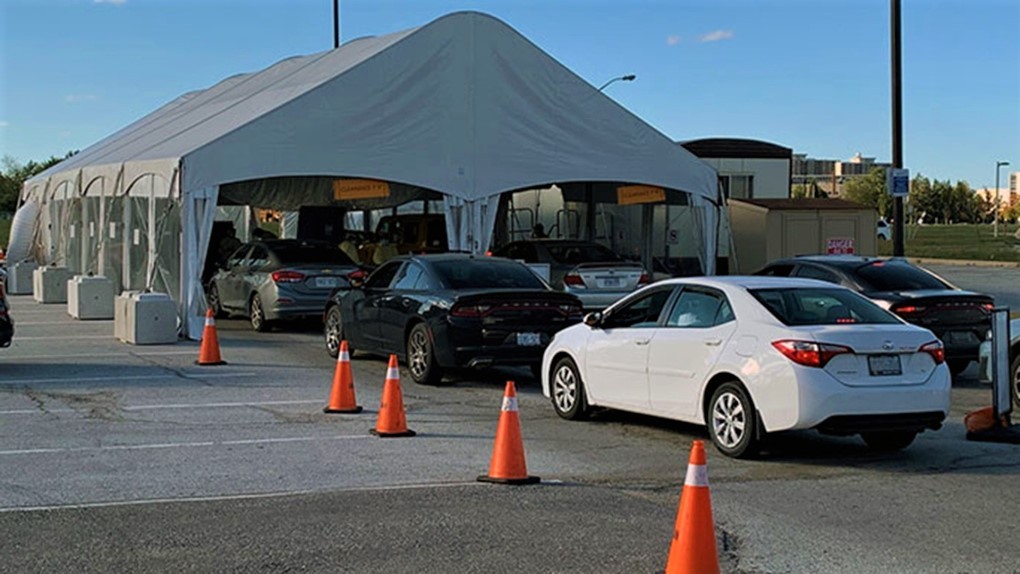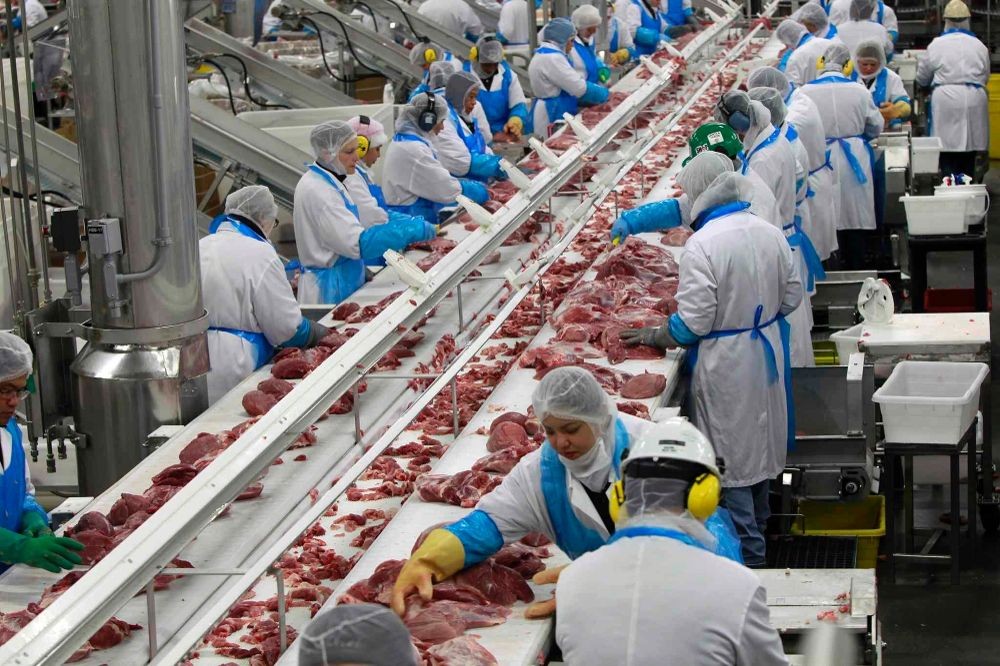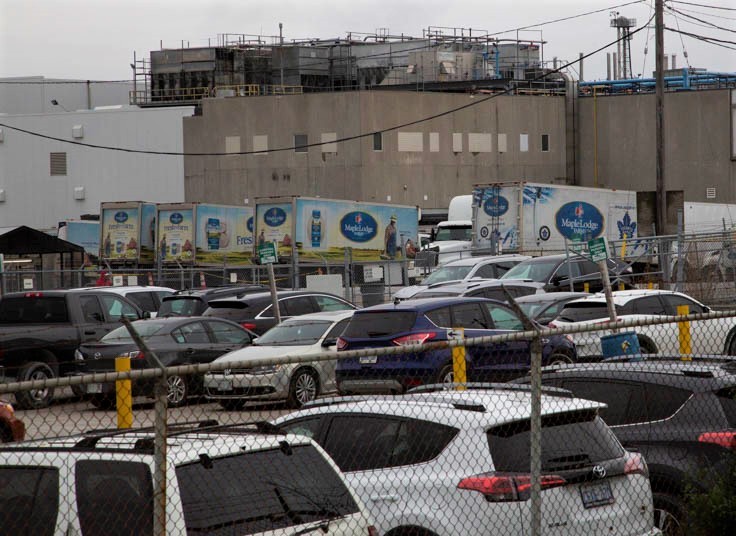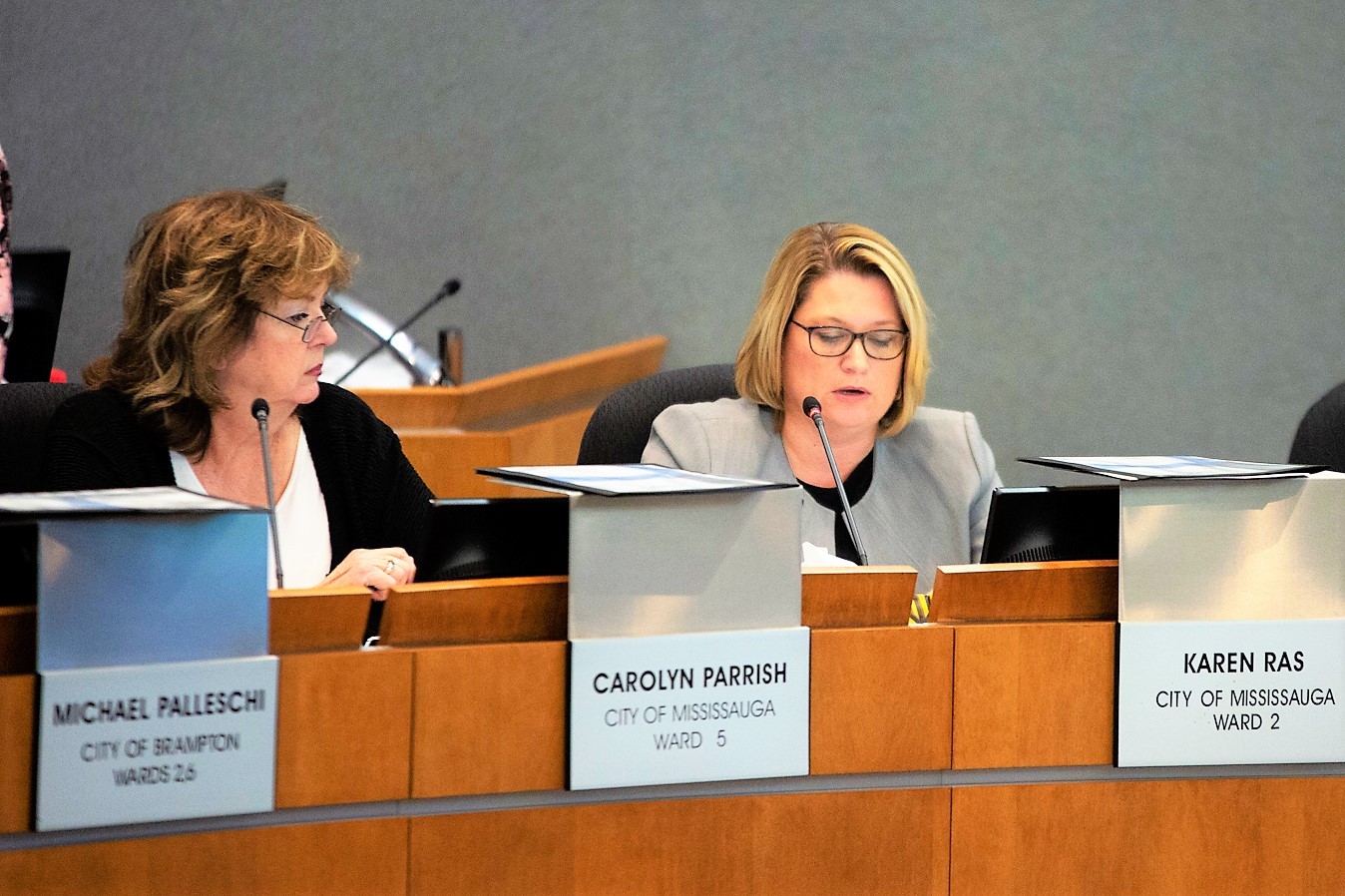
Ontario hits ‘critical point’ as Mississauga councillors single out Brampton
The Brampton food delivery driver who earned $8, tip included, to shuttle dessert to a customer in Burlington. The factory worker who packages luxury clothing during lockdown. The warehouse employee concerned about getting paid if he gets sick.
To highlight some of these stories after what she called damaging rhetoric about the South Asian-Canadian community following Diwali, Dr. Amanpreet Brar launched Humans in Brampton last month, a social media campaign that she hopes will highlight the contributions of essential workers in the city.
“They continue to go to these minimum wage jobs – sometimes in unsafe conditions – but at the same time are being blamed for the spike in cases without appropriate resources and messaging,” said Brar, a general surgery resident physician at the University of Toronto. “In many ways, quarantining or staying at home during a lockdown is a privilege that a lot of Brampton residents don’t have.”
The ICES database, created by academics collaborating between universities across Ontario and funded by the provincial government, shows between November 22 and 28, 4 of the 10 worst hit neighbourhoods in the province are in Peel and 16 out of 50 at the top of the list are in the region. Toronto, with double the population, has 18 neighbourhoods on the list. The data uses postal code information and is based on the test positivity rate in each corresponding area.


Thousands of Brampton residents, many of them newcomers, work in essential jobs, including food processing at factories like the Maple Lodge Farms plant, bottom
The worst of Peel’s postal code areas is in Mississauga and had a test positivity rate of 18.8 percent during the most recent week for which data is available. Provincial and regional guidelines establish 2.5 to 3 percent test positivity as the benchmark. Rates of infection above this indicate viral spread in the area is not being controlled through testing, contact tracing and other mitigation measures.
Overall, during this same period, according to the ICES data, Peel had the worst test positivity rate by far, at 10.3 percent, followed by Toronto at 6 percent and York at 5.7 percent. Neighbouring Halton Region, which had the eighth worst rate of all regions, was at 3.3 percent.
On Saturday, Health Minister Christine Elliott tweeted the province has “reached a critical point” in the pandemic. She reported 1,859 new cases: 463 in Peel; and 504 in Toronto.
Some indicators in Peel have shifted while COVID-19 test positivity has increased, according to Peel Public Health’s December 4 report. In the week ending November 28, positivity rates were up across the board compared to the previous week: Brampton’s was 13.8 percent; Peel’s overall rate was 10.6 percent (a slight discrepancy compared to the ICES data); Caledon’s was 7.8 percent; and Mississauga had a 7.6 percent test positivity rate for the most recent week recorded.
Three percent of those in Peel who tested positive are hospitalized. At Trillium Health Partners, which operates both Mississauga hospitals, 75 COVID-19 patients are admitted, with 17 in critical care as of December 4. Three weeks ago, there were about half as many admitted patients at a time when bed occupancy at both Trillium hospitals was beyond the number of patients each facility is equipped to treat. This means that some were either being treated in hallways and other non-treatment spaces, or some patients had to be sent to other hospitals.
The Region’s weekly COVID update shows acute-care bed capacity at all three hospitals combined (including Brampton’s) is well past the safe threshold.
The William Osler Health System, which runs Brampton Civic, the city’s lone full-service hospital, began transferring patients to free up beds for COVID-19 patients last month, and currently has 66 inpatients with the virus; 15 are in critical care. Both health systems have launched surge protocols, meaning “non-traditional spaces” in the hospitals are being used for treatment and certain surgeries are cancelled. Civic, which is chronically overcrowded, generally operates under these conditions. A freedom of information investigation by The Pointer revealed 3,035 patients were treated in hallways and other makeshift spaces at Civic in 2018. It’s the hospital where the term ‘hallway healthcare’ was coined in Ontario.
In Mississauga, though positivity and weekly incidence rates are lower than the region’s, the city’s numbers for these crucial indicators are three times higher than the Province’s “red-control” health intervention benchmark.
But compared to Brampton’s alarming COVID picture, key indicators in its larger neighbour to the south are not nearly as bad. Mississauga’s test positivity rate is about half the figure in Brampton, and the smaller city has had infection rates approximately two to three times higher than Mississauga over the past two weeks.
Brampton continues to be one of the worst hit hotspots in the country. On December 1, it recorded 381 infections, the second highest total since 386 were reported on November 12. The number on the first day of this month represents a rate of 5.86 infections for every 10,000 Brampton residents, based on a population of 650,000. The rate on the same day in Mississauga was 2.12, based on 750,000 residents, and in Ontario, using a population of 14.5 million, it was 1.18 for every 10,000 residents on December 1.
The high numbers in Brampton have created a complicated dynamic around the Regional Council table, as Mississauga and Caledon councillors have questioned why businesses and residents in their municipalities are being governed using data that is heavily weighted by their neighbour in the middle. They argue that COVID-19 measures being dictated by the Province should be based on the picture in each individual municipality, not Peel as a whole.
Businesses in Mississauga have questioned whether they will be forced to remain in lockdown, even if Mississauga’s indicators decrease below the grey-zone thresholds, but Peel’s do not, largely because of the situation in Brampton.

Mississauga and Peel Region Councillors Carolyn Parrish, left, and Karen Ras do not want COVID restrictions in their city based on Brampton's numbers (photo was taken before the pandemic)
Led by Mississauga members, Region of Peel councillors voted on December 3 to ask Peel’s Medical Officer of Health Dr. Lawrence Loh to advocate for the use of local municipal data, instead of overall Peel figures, to govern health interventions in each municipality that will affect retailers and other businesses. The successful motion was moved and seconded by Mississauga’s Ward 2 Councillor Karen Ras and Ward 5 Councillor Carolyn Parrish, who has one of the worst hit neighbourhoods in her ward. Brampton councillors at the Region did not support the decision, but they were outvoted by their Caledon and Mississauga counterparts.
Loh said he can ask the Province to start applying individual COVID-19 management protocols for each municipality, though he expressed doubt that Queen’s Park will allow it.
Such a decision would not be unprecedented. Early in the summer, the provincial government did not treat the region of Windsor-Essex as one, and kept hard hit farm communities where outbreaks had occurred back in Stage-1, under the old COVID framework, while the rest of the region was allowed to move into Stage-2, before the other areas were eventually placed in the same category.
Loh focused part of his presentation to regional councillors on a plan to tackle health inequities in Peel that will be detailed at an upcoming council meeting.
According to provincial data, Ontario registered 1,780 COVID-19 cases on December 4. Toronto reported 633 new infections, followed by Peel with 433 and York Region at 152. On December 2, Peel accounted for the highest portion of Ontario’s new infections, with 592 of 1,824 cases, a trend that carried over from previous days.
The Region’s weekly epidemiological update released Friday presents more troubling data. The acute-care bed capacity in Peel’s hospitals reached 96 percent the week ending November 30, well above the 90 percent threshold for the red-category, which indicates immediate action has to be taken to avoid a worst case scenario.
Intensive care bed capacity was at 82 percent, dangerously close to the 90 percent threshold.
Of all confirmed infections in Peel from the start of the pandemic to December 3, 48 percent were contracted in the household, 22.5 percent have been picked up in the community (the specific setting is unknown) and 15 percent have been associated with close contact, which can include interactions outside Peel.
Peel Public Health reports outbreaks were the cause of 7 percent of all COVID-19 cases in the Region since September, with two-thirds of community outbreaks originating in workplaces, and the remainder primarily from schools.
Peel District School Board issued changes to the COVID-19 screening process to parents and community members, calling for students to remain at home if they present with at least one mild symptom of the virus. The student and entire household are required to remain at home until one of several conditions are met, including symptoms not associated with COVID-19.
Brampton has the highest proportion of online learners within the Peel District School Board, at about 66 percent of students in elementary and 56 percent in secondary schools, according to a November 10 report by the Board. This represents at least 20 percent more than the proportion of students learning online in Mississauga and Caledon.
Though most of Brampton’s students are at home, many in the city’s workforce have been forced to perform essential functions on the jobsite.
To meaningfully assist those in the impossible situation of choosing between health and livelihood, frontline workers are using an approach that borrows from harm reduction strategies when informing patients they tested positive for COVID-19, said Laura Guerrero, CEO of WellFort Community Health Services.
“We have had numerous cases of people who will say over the phone… ‘no, I have not been in contact with anyone,’ and then you overhear kids, or you hear somebody talking in the household,” she said. In a non-judgmental conversation, staff tell the patient what they should do to avoid spreading the virus, and offer to drop off masks and food baskets to low-income households where residents are attempting to quarantine. Staff also connect clients to a one-time session with a clinical counsellor, and provide referrals to primary care, especially if the client is a newcomer or does not have health coverage.
“I feel that they’re a segment of our population that sometimes are forgotten,” Guerrero said.
Through its food security programming, WellFort delivered close to 200 food hampers to Brampton residents, mainly in the Bramalea area, and is helping clients apply for a month of rent relief through funding it secured from a partner agency.
“I didn’t know I could get tested without a health card. Not only did I get the test, [but] me and my family will be able to see a doctor regularly,” said one WellFort community client in a testimonial shared with The Pointer. “We have not seen a doctor since we came to Canada, over 2 years [ago]. Having food delivered to us while in self-isolation has helped us focus on paying the rent.”

Dr. Amanpreet Brar is educating the public so negative stereotypes and false perceptions about visible minority communities don't lead to worse public health outcomes
Culturally sensitive care is the focus of the new South Asian COVID Task Force, a group of volunteers with backgrounds in medicine, law, and public health who are aiming to target health inequities by providing accessible information to communities. As a member of the taskforce, Dr. Brar is spending time between her surgical residency and social media campaign, to connect with members of the South Asian-Canadian community in Brampton and “push back that narrative” that emerged on social and traditional media following Diwali, when misinformation was posted suggesting widespread celebrations took place in violation of COVID-restriction measures.
“When I interview residents, what I'm hearing is there's a huge disconnect” between the South Asian-Canadian community and others in Peel, Brar said. “After the shaming and stigmatization that has happened, it damaged the relationship even more.”
Email: [email protected]
Twitter: @LaVjosa
COVID-19 is impacting all Canadians. At a time when vital public information is needed by everyone, The Pointer has taken down our paywall on all stories relating to the pandemic and those of public interest to ensure every resident of Brampton and Mississauga has access to the facts. For those who are able, we encourage you to consider a subscription. This will help us report on important public interest issues the community needs to know about now more than ever. You can register for a 30-day free trial HERE. Thereafter, The Pointer will charge $10 a month and you can cancel any time right on the website. Thank you.
Submit a correction about this story


